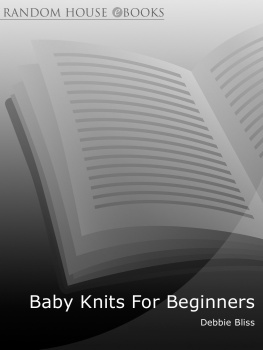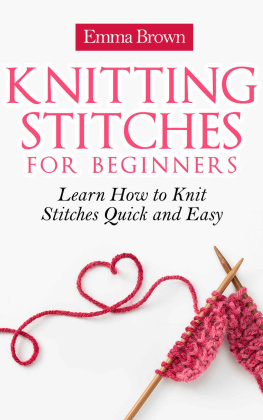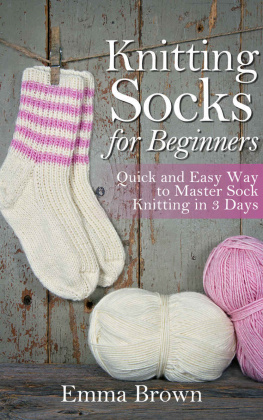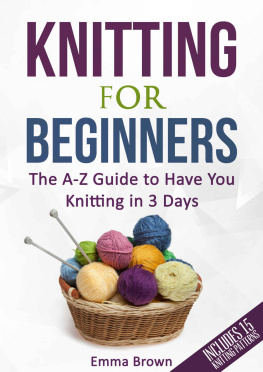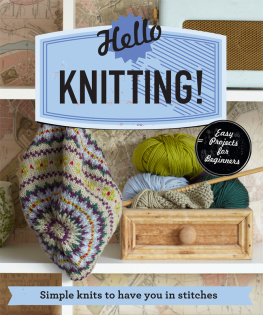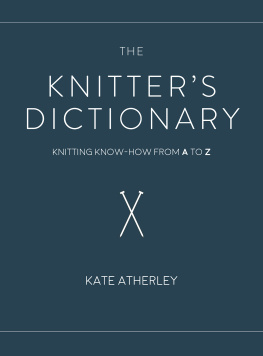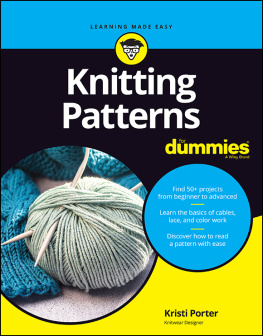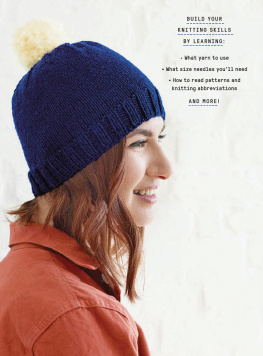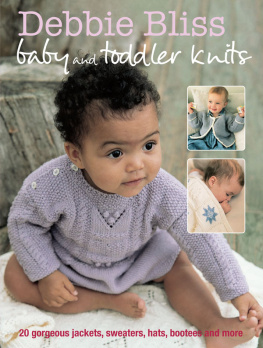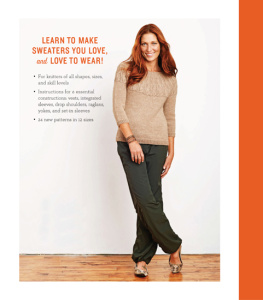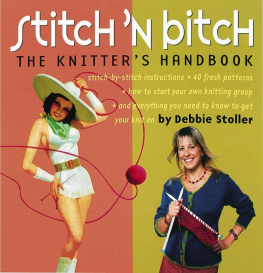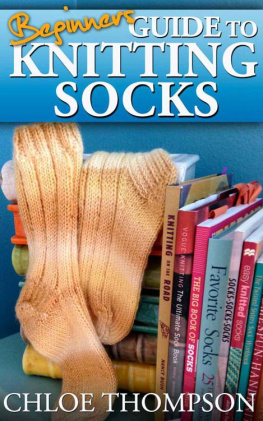contents
About the Author
Debbie Bliss is the foremost knitwear designer for children. With a string of bestselling titles to her name, she regularly tours the US, Canada and other countries, giving lectures and doing workshops and has her own Debbie Bliss branded yarn range which is sold worldwide. Debbie lives in London with her husband and two children. Her website is www.debbieblissonline.com.
introduction
Many first-time knitters are attracted to the craft when they are looking for something special to make for a new baby. Surrounded as we are by mass-produced garments, creating a hand knit gives us the opportunity to invest into every stitch the love and care we feel for our own baby or one of a friend or family. Everything we knit is unique, however many other people have made the same pattern; every knit or purl we work reflects our individuality. Small garments also give the new knitter the opportunity to experience the excitement and satisfaction of completing a project more quickly than when tackling one for an adult. When learning anything new it is important to feel that the finished design is always in sight, especially when you are perhaps struggling for a time with a new technique.
Each project here features a new technique or a new stage in developing your understanding of the craft, from the simple garter stitch scarf to the final design, a V-neck sweater with pockets and fully fashioned shapings. There are clear, easy-to-follow diagrams at the beginning of the book, which are then repeated when a particular technique is used in a pattern. The techniques have been repeated both to help the reader and to emphasise the stage that she/he has reached. As well as concentrating on the basics, I have also explained pattern instructions that I have found even experienced knitters sometimes find confusing things such as turning rows or creating square set-in sleeves.
Although most of the designs are very simple, I have designed them to be attractive and stylish in their own right rather than just exercises in technique. I have kept the styles classic as one of the joys of knitting for babies is that if the garments are well looked after they can be handed on to others and down to future generations. I have also used my own yarn ranges, which I feel are perfect for knitting for babies, with soft cottons, cashmere mixes and merino wool to wrap around or snuggle into. Child friendly, they are easy to wash and wear.
Knitting Essentials
yarns
Your knitting essentials will always begin with your yarn and needles. We are lucky to be around at a time when there is so much choice to be had in the variety of wonderful yarns that are available and a selection of needles to suit all types of knitting and preferences. Here is a guide to yarns in general and to the ones used in this book.
yarn fibres
Fibres are divided into two main categories, natural and synthetic. Natural fibres are then divided into animal fibres, such as wool, angora, cashmere and silk, and those from vegetable fibres, such as cotton, linen and hemp. Synthetic fibres are made from polyester, nylon and acrylic. Synthetic fibres tend to get a bad press and for good reason. Although they are cheaper and can be thrown into a washing machine, they dont have the same insulating properties and can a produce limp, flat fabric, which will melt on contact with an iron. However, blended with natural yarns they can add durability and lightness.
yarn plies
Yarn is also made up from one or more strands of yarn called plies. Plied yarn comes from several plies of yarn twisted together. The thickness of a yarn comes not from the number of plies but the individual thickness of each ply. For instance, a 4-ply yarn can be finer than a single-ply heavy yarn. Yarns with a tight twist are usually strong and smooth and those with a looser twist are generally softer and less even. They can pull apart if over-handled and may not be suitable for sewing up your garment.
yarn weights
Yarns come in different weights or thicknesses and range from fine 2- or 3-ply yarns to bulky, chunky yarns. The thickness of the yarn determines how many stitches and rows there are to 2.5cm (1in) and is the basis on which all knitting patterns are created.
the most commonly used yarns
4-ply: a fine yarn knitted on 3mm (US 3) needles. The tension is usually 28 sts to 10cm (4in).
Lightweight yarn: this is a yarn that is slightly thicker than a 4-ply and is worked on the same-sized needles. It is between a 4-ply and a double knitting yarn. The tension is usually 25 sts to 10cm (4in).
Double knitting: often referred to as DK, this yarn is knitted on 4mm (US 6) needles. The tension is usually 22 sts to 10cm (4in).
Aran weight: slightly thicker than a DK and traditionally used in Aran or fisherman sweaters, aran is knitted on 4mm (US 7) or 5mm (US 8) needles. The tension is usually 18 sts to 10cm (4in).
Chunky: knitted on 6mm (US 10) needles, the tension is usually 14 sts to 10cm (4in).
yarn descriptions
You may come across these yarn terms when choosing yarn.
Wool: wool spun from the fleece of sheep is the yarn that is the most commonly associated with knitting. It has many great qualities as it is durable, elastic and warm in the winter. Merino wool is from the oldest breed of sheep and is considered the finest wool yarn. Lambs wool comes from a lambs first shearing and pure new wool is used to describe wool that is made straight from the fleece and is not recycled.
Cotton: cotton is made from a natural plant fibre. It is an ideal all-seasons yarn as it is warm in the winter and cool in the summer. It also shows up stitch detail well, which makes it ideal when you have subtle stitch patterns such as moss stitch, particularly where it is used as detailing. Generally it does not have the elasticity of wool.
Cotton and wool: using a yarn that is a combination of cotton and wool is particularly good for childrens wear because the wool fibres give it elasticity while the cotton content is perfect for children who find wool irritating against the skin.
Cashmere: cashmere is made from the under hair of a particular Asian goat. It is associated with the ultimate in luxury and is unbelievably soft to the touch. If combined with merino and microfibre, as in my cashmerino range, it is a perfect yarn for babies.
Smooth yarns: these tend to be the yarns with the tighter twist. They are sometimes also referred to as classic yarns. The smooth surface makes them perfect for showing up stitches, which is particularly important with subtle stitch patterns or cables.
Fancy or novelty yarns: these yarns tend to be part of a fashion trend for a particular season. They are often textured, such as the curly looking boucl, or may be a shiny ribbon yarn. They do not always have a very long shelf life so knit it while you can, or if it is for a project that you are going to put on the back burner, make sure you have enough yarn!
Blends: yarns made from a mix of fibres, such as wool/cotton, cotton/silk. They can often combine the best of both worlds, for instance the elasticity of wool with the coolness of cotton.
Next page
